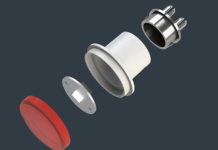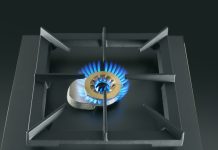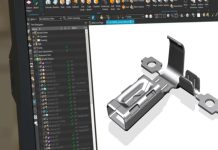Even if it has never gone out of use, the conventional water heater has been replaced by more up-to-date products and today we prefer defining the appliance as water heater, accumulator or boiler, thus becoming an essential component of very innovative systems whose goal still essentially consists in heating water.

They called it water heater because it was generally installed in the bathroom just with the goal of producing only the necessary hot water for personal hygiene, when the building was not equipped with centralized heating plants. The evolution of a household appliance like the water heater recalls the fairy tale of the ugly duckling that becomes a beautiful swan, because now the “cast-off” water heater has turned into an essential element of residential plants thanks to its high content of technology, integrable with systems that exploit different energy sources, even renewable, actually constituting an opportunity to save energy consumptions.
The water heater, actually, has a noteworthy past, too: it was born in fact in 1889, starting from an intuition of Hugo Junkers, the calorimeter. This device could measure the heat produced by a combustion gas with constant water delivery, indicating the gas calorific power on a scale of values. Thanks to this instrument, Junkers discovered the principle of the continuous-flow boiler and, in 1894, he registered the patent for the gas water heater that he had developed after his invention. In 1897, Junkers sold only 184 of his gas water heaters, because at that time the product represented the maximum luxury. Its successive evolutions resulted in the massive production of more compact appliances, with the possibility of hanging them on the wall, in electrical or gas version, delivering instantaneous hot sanitary water at low costs to millions of dwellings and offices equipped with autonomous plants.

New life for the water heater
The function of electric accumulation water heaters consists in heating the water contained in a tank through the operation of a resistance. Gas water heaters heat instead the water by means of a flame fuelled by natural gas or LPG and can be with accumulation or instantaneous. In the first case there is a tank, where is accumulated the water that, at the product switching on, is heated, in the second case on the contrary the water is immediately heated when required. Both typologies are classified in energy classes according to their performance. Precisely as it happens for household appliances, energy class and efficiency are directly proportional: the higher is the first the higher will be users’ saving. Besides the possibility of being of gas or electric type, the various water heater versions currently on the market are distinguished according to the typology of plant adopted by single utilities. There are accumulation, instantaneous and solar water heaters, equipped with thermostat and electric resistance that, together with the boiler, represent the core of the system, influencing its performance and reliability; whereas the most innovative heat pump water heaters exploit electric back-up heating systems, essential elements to assure the availability of hot water also in case of temporary absence of sufficient alternative energy.

What are anyway the main properties of water heaters? “Concerning our proposals”, says Paolo Camparini from Immergas – Marketing and Strategic Planning – Product Manager, “certainly we recognized the importance of the size compactness and of the easy user interface in gas versions while in heat pump ones the focus was on the exploitation of renewable energies and on the possibility of benefitting from deductions and law incentives”. Sara Saltini, Marketing Manager of Rinnai states: “Instantaneous water heaters provide users with a series of relevant advantages compared to conventional accumulators. First of all, the energy consumption is directly proportional to the real use. The hot water is produced only against a real demand (i.e. the opening of a hot water tap). It is no longer necessary to keep big quantities of water hot, therefore there is no thermal dispersion. Besides, in absence of inactive waters, we completely annul the risk of bacteria proliferation that causes the Legionella pneumophila, a very dangerous disease for our health. Finally, the size of an instantaneous appliance is unavoidably smaller compared to the one of an accumulator (just because this type of water heater does not need to stock water in its inside) and it can be wall-mounted, also outdoor, to recover useful space inside”. According to Marco Manzone, Marketing Manager Chaffoteaux Italia: “Water heaters are apparently very simple devices that however perform an essential function for the domestic comfort: in other words, they allow having hot water at disposal and in big quantities, without operating more complex systems, like for instance the plant linked with the domestic boiler. Besides, theirs is a very reliable and user-friendly technology that, in certain contexts, permits a more efficient water management”. Francesco Bucciarelli, Sales Manager Italia Cordivari underlines: “Our company produces a range of heat pump water heaters that we have called Bollyterm HP. They are integrated appliances, consisting of an accumulation of hot sanitary water and of an air-water heat pump. The assembly is managed by an electronic unit with an interface that allows whatever adjustment and setting. The main characteristic of these appliances is their capability of producing and accumulating the hot sanitary water very efficiently”. In fact, the main function that water heaters must perform is producing water in big quantities; for this reason, we have asked manufacturers through what performances as well. Francesco Bucciarelli from Cordivari explains: “Heat pump water heaters provide for the production and the accumulation of hot water for sanitary use autonomously and then without the need of connecting a boiler or another external heat generator. The efficiency and the excellent performances are one of their peculiarities. Using the heat pump technology with a very high C.O.P. (coefficient of performance), in the order of 3, they allow a saving up to 70% compared with a conventional water heater with electrical operation”. “Especially”, states Luca Berardo, Managing Director Ygnis Italia Spa, “the production of hot water must take customers’ energy saving requirements into account”; while according to Giovanni Sestito, Brand Manager Beretta Italia: “Acquazenit heat-pump water heaters use the thermal energy of air for the production of hot water for sanitary use. The energy convenience of heat pumps resides in their capability of using the heat present in nature, in the air in the specific case, with high efficiencies, reducing consumptions and in this way protecting the environment”.
High technology at the service of comfort
Reliability of components as warrantee of long product life characterizes the main components of a water heater. The choice of suitable materials and shapes for the water conditions, the product material and sophisticated heating performances is essential to assure that the water heater is reliable, safe, durable and avoids noise problems. Likewise, the use of a precise and reliable thermostat, selected according to the characteristics of the water heater, grants its correct and safe operation. Sara Saltini from Rinnai assures: “At Rinnai we believe it is essential to offer safe, reliable and durable products to our customers. Consequently, the quality of the used materials and the focus on all the phases of the manufacturing process are fundamental aspects. At the same time, it is advisable that a product can be integrated at best with the other components of the plant, so that the plumbing system is really efficient and does not waste energy. Let us consider, for instance, a structure equipped with a solar thermal system. In this case, the smart integration between the water heater and the collector becomes central in the evaluation of a water heater. Infinity by Rinnai detects the temperature of the incoming water and integrates it only when needed and only with the necessary degrees to reach exactly the temperature set by the user on the remote control. In this way the system fully exploits what the Sun offers free”. Giovanni Sestito from Beretta: “The heat-pump water heater by Acquazenit consists of a boiler with expanded polyurethane insulation and capacity of 80 – 120 litres depending on the versions. The enamelled steel boiler and with anti-corrosion magnesium anode is externally wound by the coil of the heat pump. In the upper part of the product, is placed an air-water heat pump that transfers the heat from the air to the water stocked in the boiler. If necessary, a double standard electrical resistance (1kW x 2), is used for the “Turbo” function. Besides, the product is equipped with air probe for the activation of the electrical resistance outside the working range and for the defrosting cycle in Acquazenit E versions. The maximum temperature in the production of hot sanitary water is 75°C and on the display an indicator always visualizes the charge state of the boiler”.

Reliable and user-friendly products
Unlike less recent products that often literally left users “under a cold shower”, current water heaters satisfy the demand for hot water with the possibility of using it also according to scheduled times, thus granting energy saving and performances without wastes. This also thanks to the ‘friendly’ design of products. In the opinion of Luca Berardo from Ygnis this is fundamental: “The user-friendliness more and more approaches the end-user to the company and especially makes him become integral part of its project of integration into the furnishing”. According to Sara Saltini from Rinnai: “We should use appliances, rather than understanding them. In fact, the user who faces an appliance equipped with simple and intuitive interface is unavoidably more satisfied and encouraged to exploit fully all of its potentialities compared to another who, on the contrary, must deal with a complex interface, even if we were referring to a high-end product featuring excellent performances. The complexity might in fact discourage the user, to the extent of affecting the good use of the appliance: the user, having to face difficult setups not understandable at first sight, might use only some of them, not optimizing all possible operation modalities foreseen by the appliance and then reducing the performance. Marco Manzone from Chaffoteaux underlines: “Unlike several other plants, the water heater is used in intensive manner by the end-user. Often, in fact, to satisfy the various needs of all the components of a family, it is repeatedly switched on and off. Moreover, the water temperature itself is regulated with weekly or even daily frequency. For all of these reasons, it is very important to conceive devices characterized by an intuitive use and easily exploitable by any user typology. Besides, practicality also helps in preserving the reliability and the durability of products because it prevents any error to users and, even before, to installers”. Francesco Bucciarelli from Cordivari: “We have worked with this all-round target. We believe that the simplicity of installation and use are fundamental and that designing “friendly” solutions will be more and more important in the future. For this reason, Bollyterm HP is a plug and play product, highly integrated and ready to use, simply connecting it with the hydraulic plant and the electric socket”.

Eco-compatible and ready for the Smart Era
Thermohydraulic products are the first investigated for the influence they exert on the environmental impact, therefore the development of non-polluting products (design, production of components and operation) holds a fundamental importance for the environment protection. We asked manufacturers what are the smartest novelties recently introduced into their products. Luca Berardo from Ygnis replies: “We have included in our appliances the possibility of connecting and of controlling them with a smartphone, of programming the times of hot sanitary water production to optimize the saving, and the insertion of microprocessors to adjust the power of the appliance according to users’ use time bands during the day”. Giovanni Sestito from Beretta: “Easy installation, silent and reliable operation, very reduced maintenance need are the advantages of our highly ecologic and cheap smart system. The Acquazenit E version is devised for an operation in heat pump up to an air temperature of -7°C, making the product suitable also in zones with colder temperatures”. Paolo Camparini from Immergas underlines: “In our range, two water heater typologies are essentially available: gas instantaneous and with heat pump. For the first, in the versions with sealed chamber and forced draft (Caesar ErP) we have introduced the solar function that allows connecting in series the water heater with a sanitary accumulation, in its turn linked with a thermal solar plant. In this way, we can reduce the consumption of fossil gas. For the version with heat pump (Rapax ErP) the operation principle is different since we grant the heating of an accumulation of sanitary hot water through heat pump. In this case, we have made the appliance compatible with the presence of photovoltaic plants to exploit the additional electric energy produced by the photovoltaic plant to full benefit of the production of sanitary hot water”. Marco Manzone from Chaffoteaux explains that: “The energy efficiency is in the DNA of Chaffoteaux and remains the first target we pursue when we develop a new product. It is the case of the instantaneous gas water heater Avenir Plus, with sealed chamber and an ECO function that allows heating the water at the optimal temperature with the minimum resource consumption. In the field of electric water heaters, too, we have worked at energy performances, enriching our catalogue with a new electrical accumulation water heater in C class. Thanks to a further development in the tank coating, in fact, we succeeded in further improving the efficiency, thus obtaining a higher saving for end-users”. Francesco Bucciarelli from Cordivari affirms: “The new Bollyterm range, in the last version, is equipped with a forefront electronic management system with graphic intuitive interface. Compared to the first versions, the water heater features very simple setting and use, to the extent of being considered a sort of household appliance. Thanks to the range completeness, in the FLEX version, we have proposed some package solutions combined with thermal solar to offer a super-efficient system in triple A Class that allows producing hot sanitary water at almost null costs and impact”.
The latest regulations
Luca Berardo from Ygnis reminds us that “on September 26th 2015 they became mandatory and were introduced in all Europe the ErP energy classifications of water heaters to protect end-users’ energy saving”. Sara Saltini from Rinnai explains us what the regulation provides in the specific case: ”European regulations concerning the ErP issue (Energy related Products, i.e. products connected with the use of energy) aim at reducing the energy consumption and the environmental impact through an eco-compatible design. All the appliances intended for the heating and the production of sanitary hot water, with nominal thermal power under or equal to 70kW, must be built according to ecodesign guidelines and conform to the mandatory requisites of energy performance, as established by the Directive 2009/125/EC, besides being supplied to end-users with energy efficiency label, according to what established by the Directive 2010/30/EU. Rinnai offers only water heaters in A-class to all of its consumers, the highest energy class provided for this product typology. Last year came into force also the MD 26/06/2015 “Minimum Requisites” indicating what are the minimum energy performances requested to the systems for the heating, refreshing and production of hot sanitary water (HSW) for the buildings recently constructed and for those undergoing the renovation/upgrading of technological systems. This decree, excluding residential uses and similar * for which it does not provide additional indications compared to those already established with the ErP, it clearly regulates also the production of hot sanitary water, called to comply with a minimum efficiency on the PCI corresponding to 90 + 2 log Pn (the same imposed to the heating), efficiency reachable only through the condensate. Actually, with the coming into force of the above-mentioned MD, all those using the hot water in professional way (let us consider the entire hotel sector, all industries that use hot water at a determinate temperature inside manufacturing processes – first of all food companies -, the public sector, from school to healthcare, agriculture, medical and the entire beauty field, from hairdressers to wellness centres,…) if they use gas producers, the latter must be condensate models, to achieve parameters of polluting emissions and energy efficiency complying with the regulation”. Paolo Camparini from Immergas, instead, warns us that: “Next years it will be mandatory for manufacturers to raise the efficiency of water heaters by heightening the efficiency, to the detriment of products scarcely performing or using conventional technologies”.
*For single-family water heater, we mean a water heater exclusively dedicated to the production of hot sanitary water at the service of single real estates for residential use and similar, providing for a use of hot sanitary water comparable to the typical one of a purely residential destination […].





